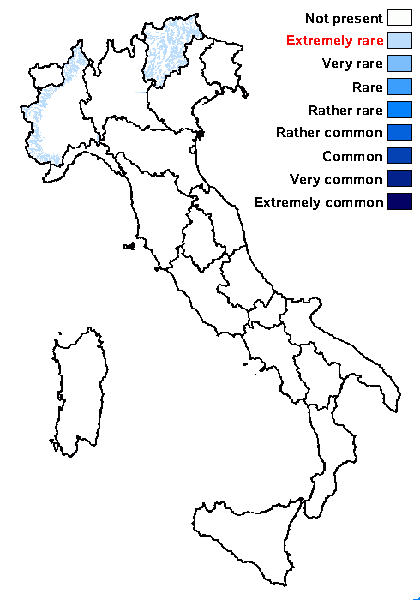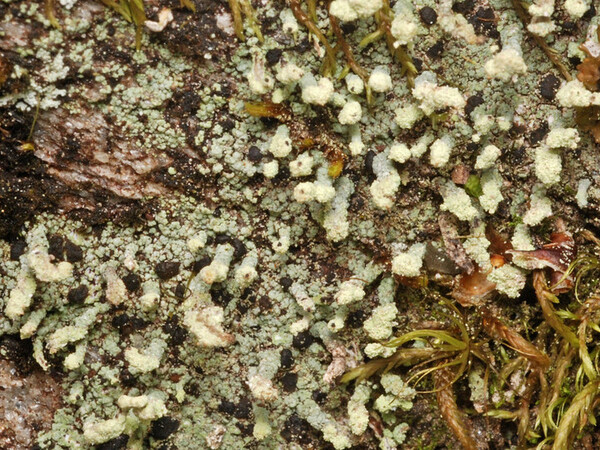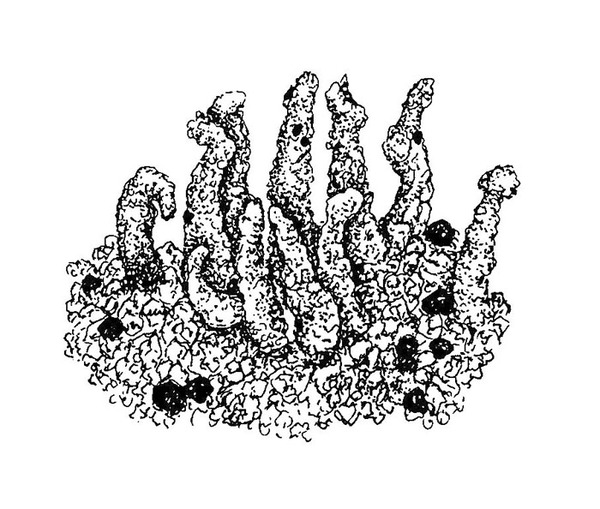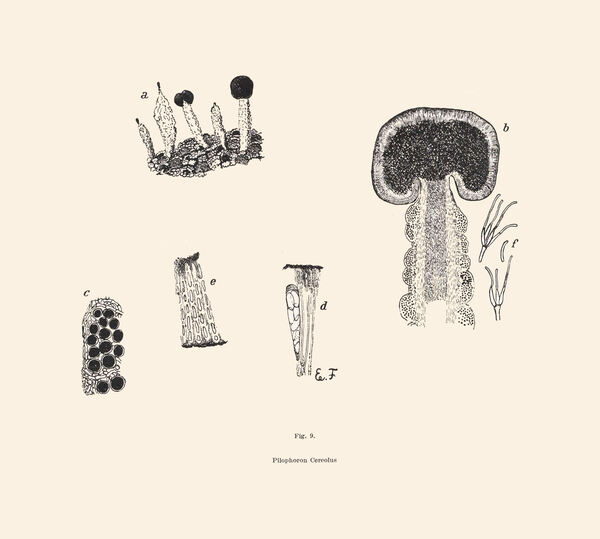Pilophorus cereolus (Ach.) Th. Fr.
Lichenogr. Scand., 1: 55, 1871. Basionym: Lichen cereolus Ach. - Lichenogr. Suec. Prodr.: 89, 1799.
Synonyms: Stereocaulon cereolinum Ach. non auct. ital.; Stereocaulon cereolum (Ach.) Ach.
Distribution: N - TAA (Nascimbene & al. 2022), Piem.
Description: Primary thallus crustose, persistent, of sorediate, 0.1-0.2 mm broad, grey-green to grey-brown granules, with scattered, brown to almost black, 1-2 mm wide cephalodia. Pseudopodetia simple, solid, to 6 mm tall, c. 1 mm thick in the middle, farinose-sorediate throughout, irregularly curved. Apothecia rare, solitary at tips of pseudopodetia, black, spherical, to 1.5 mm broad. Hymenium dark purple, c. 80 μm high. Asci 8-spored, elongate-clavate, with a thin, outer amyloid layer and a thickened tholus penetrated by a pore, the sides of which stain I/KI+ deep blue, Porpidia-type. Ascospores 1-celled, hyaline, spindle-shaped, 14-21 x 5-6.5 μm. Pycnidia bottle-shaped, black, on the tips of pseudopodetia. Conidia sickle-shaped, hyaline. Photobiont chlorococcoid. Spot tests: K+ yellow, C-, KC-, P-. Chemistry: atranorin and zeorin.Note: an arctic-alpine, probably incompletely circumpolar lichen found on siliceous rocks in moist-wet situations near treeline; restricted to the Alps in Italy, and perhaps more widespread, but certainly not common.
Growth form: Fruticose
Substrata: rocks
Photobiont: green algae other than Trentepohlia
Reproductive strategy: mainly sexual
Commonnes-rarity: (info)
Alpine belt: absent
Subalpine belt: extremely rare
Oromediterranean belt: absent
Montane belt: extremely rare
Submediterranean belt: absent
Padanian area: absent
Humid submediterranean belt: absent
Humid mediterranean belt: absent
Dry mediterranean belt: absent

Predictive model
Growth form: Fruticose
Substrata: rocks
Photobiont: green algae other than Trentepohlia
Reproductive strategy: mainly sexual
Commonnes-rarity: (info)
Alpine belt: absent
Subalpine belt: extremely rare
Oromediterranean belt: absent
Montane belt: extremely rare
Submediterranean belt: absent
Padanian area: absent
Humid submediterranean belt: absent
Humid mediterranean belt: absent
Dry mediterranean belt: absent

Predictive model
 Index Fungorum
Index Fungorum
 GBIF
GBIF




